Hey friends! Few things compare to the charm of a fluffy cat, with its thick, soft coat and affectionate personality.
In this guide, we’ll introduce you to ten of the fluffiest cat breeds, from the regal Persian to the playful Maine Coon and the affectionate Ragdoll. These breeds offer a range of temperaments, grooming needs, and unique characteristics. Discover which fluffy friend might be the perfect match for your home.
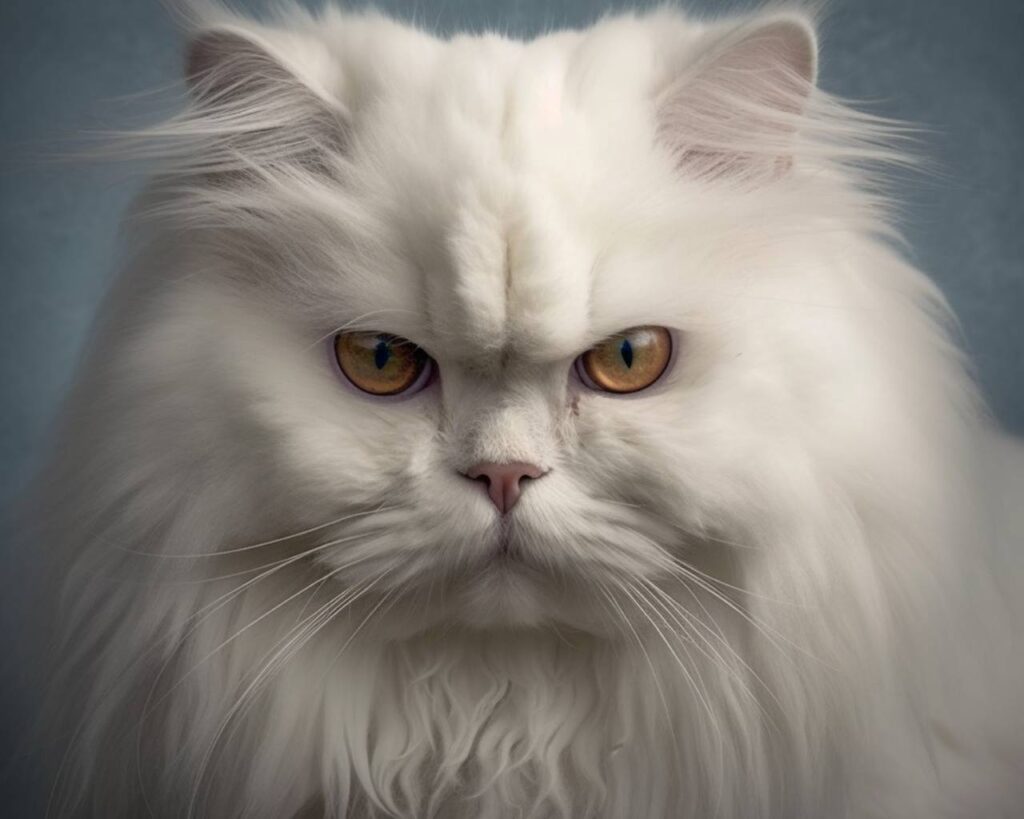
Persian Cat
Persian cats are often considered the epitome of fluffy cat breeds. Their long, luxurious coats and serene expressions exude elegance and grace, making them one of the most sought-after breeds for cat lovers worldwide.
They are not known for being particularly active; instead, they prefer lounging comfortably, making them perfect for those who appreciate a more laid-back pet. Their expressive eyes and distinctive squashed faces add to their unique, captivating charm, making them one of the world’s most beloved and recognizable cat breeds.
- Preferences: Quiet environments and gentle handling.
- Size: Medium to large; Height: 10-15 inches; Weight: 7-12 pounds.
- Food preference: High-quality dry food to help maintain coat health.
- Lifespan: 12-17 years.
- Breed ancestors: Thought to originate from Persia (modern-day Iran).
- Related cat breeds: Himalayan, Exotic Shorthair.
Good to know: Regular grooming is essential for Persian cats to prevent matting and hairballs. Investing in a good quality brush and scheduling daily grooming sessions can become a bonding experience between you and your Persian.
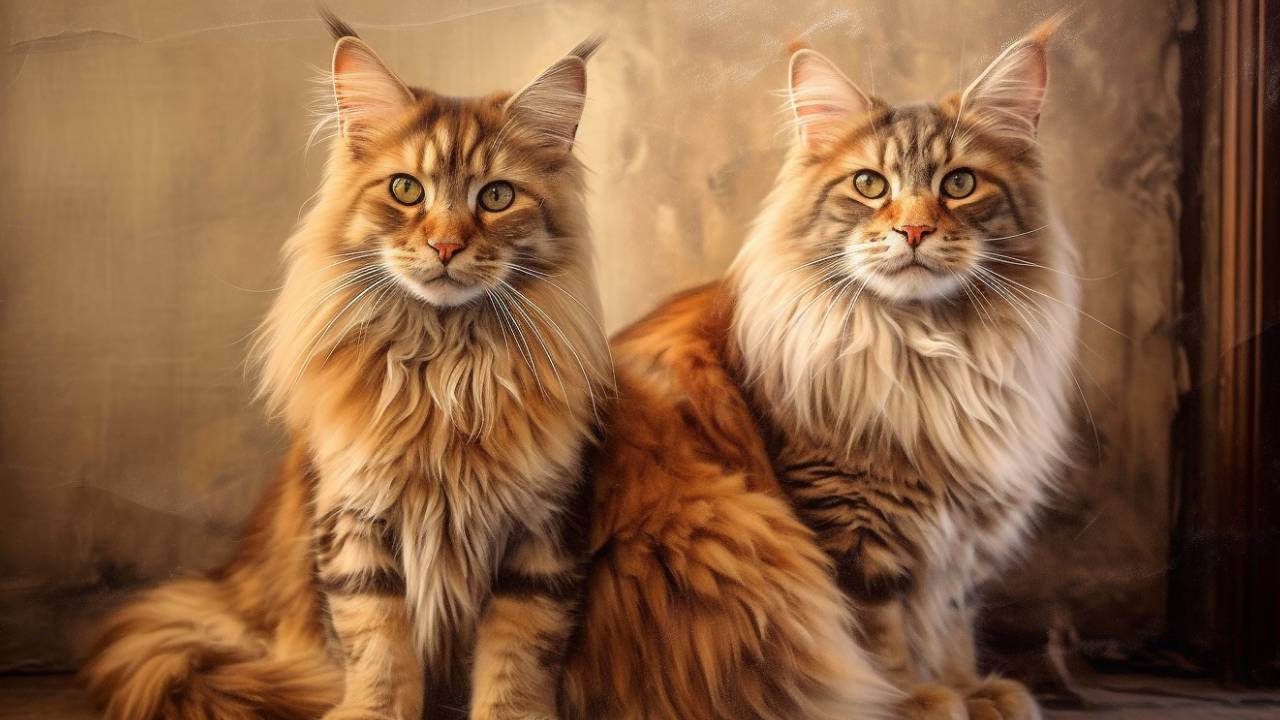
Maine Coon
Maine Coons, with their tufted ears, bushy tails, and prominent personalities, are not only one of the giant cat breeds but also boast a thick, fluffy coat that can withstand harsh climates. Maine Coons are known for their dog-like behavior, making them excellent companions for families with children or other pets.
- Preferences: Interactive play and exploration.
- Size: Large; Height: 10-16 inches; Weight: 10-25 pounds.
- Food preference: Requires a protein-rich diet to support their large size.
- Lifespan: 12-15 years.
- Breed ancestors: Native American long-haired cat mixed with breeds brought over by Vikings.
- Related cat breeds: Norwegian Forest Cat, Siberian.
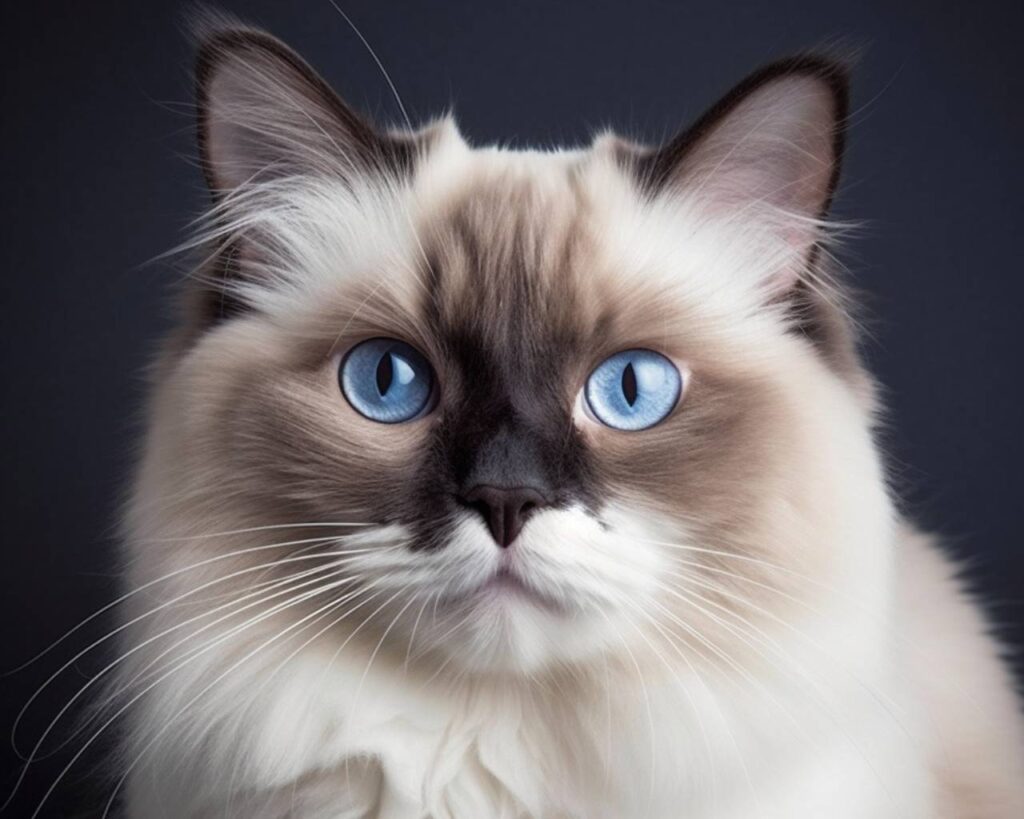
Ragdoll
Ragdolls are beloved for their striking blue eyes, semi-long fluffy coats, and tendency to go limp in your arms, much like a ragdoll. Their gentle and laid-back nature makes them perfect lap cats. Unlike many other breeds, they remain playful and kitten-like well into adulthood, delighting their families with their gentle and loving temperament.
- Preferences: Being close to their human companions.
- Size: Large; Height: 9-11 inches; Weight: 10-20 pounds.
- Food preference: Balanced diet with a mix of wet and dry food.
- Lifespan: 12-17 years.
- Breed ancestors: Result of breeding free-roaming cats in California in the 1960s.
- Related cat breeds: None specific, as they are a unique breed.
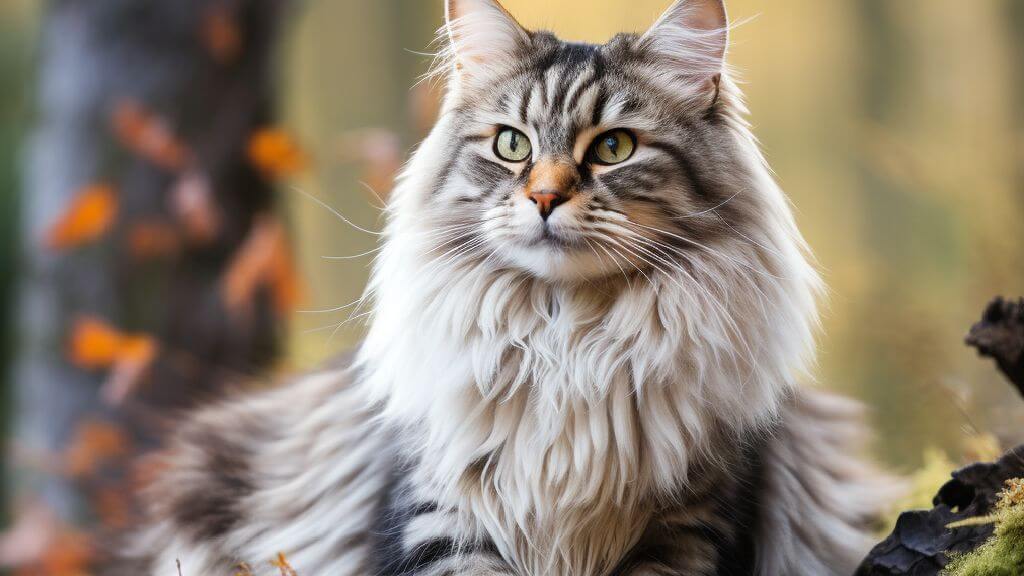
Siberian
Siberian cats are magnificent animals with dense, water-repellent coats that echo their wild ancestry. With its dense, water-repellent coat, the Siberian cat is as adventurous as it is beautiful. Originating from Russia, these cats are built to endure cold climates, making their fluffy coats functional and attractive.
- Preferences: Climbing and interactive play.
- Size: Medium to large; Height: 9-11 inches; Weight: 8-17 pounds.
- Food preference: High-quality food that supports their energetic nature.
- Lifespan: 12-15 years.
- Breed ancestors: Russia’s native forest cat.
- Related cat breeds: Norwegian Forest Cat, Maine Coon.
Good to know: Siberians are hypoallergenic, making them suitable for individuals with mild cat allergies.
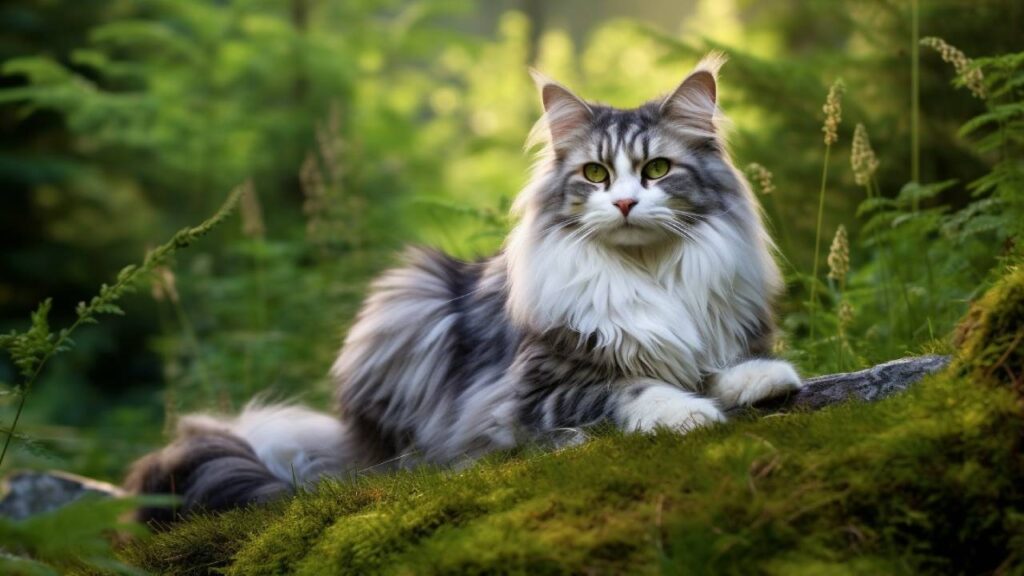
Norwegian Forest Cat
With a history that dates back to the Viking Age, Norwegian Forest Cats are known for their robust build, long, flowing coats, and friendly temperament. They are as much at home in a cozy apartment as they were on the Viking ships. Norwegian Forest Cats adapt well to indoor living despite their love for the outdoors, provided they have enough space to explore and climb. Their thick coats require regular grooming, but their easy-going nature makes this a pleasant task.
- Preferences: Exploring outdoor spaces or simulating such environments indoors.
- Size: Large; Height: 9-12 inches; Weight: 8-18 pounds.
- Food preference: Diets rich in proteins and fats to support their active lifestyle.
- Lifespan: 14-16 years.
- Breed ancestors: Descended from cats brought to Norway by Vikings.
- Related cat breeds: Maine Coon, Siberian.

British Longhair
British Longhairs epitomize elegance with their dense, plush coats and round, expressive eyes. These cats are calm and affectionate and make excellent companions. They possess a peaceful and affectionate nature, often seeking quiet moments of companionship rather than wild play. Despite their reserved demeanor, British Longhairs enjoy engaging in gentle play and showing affection to their chosen humans.
- Preferences: Calm environments and interactive toys.
- Size: Medium; Height: 12-14 inches; Weight: 9-18 pounds.
- Food preference: Quality dry food to maintain their coat and health.
- Lifespan: 12-20 years.
- Breed ancestors: A mix of British Shorthairs and long-haired breeds.
- Related cat breeds: British Shorthair, Persian.
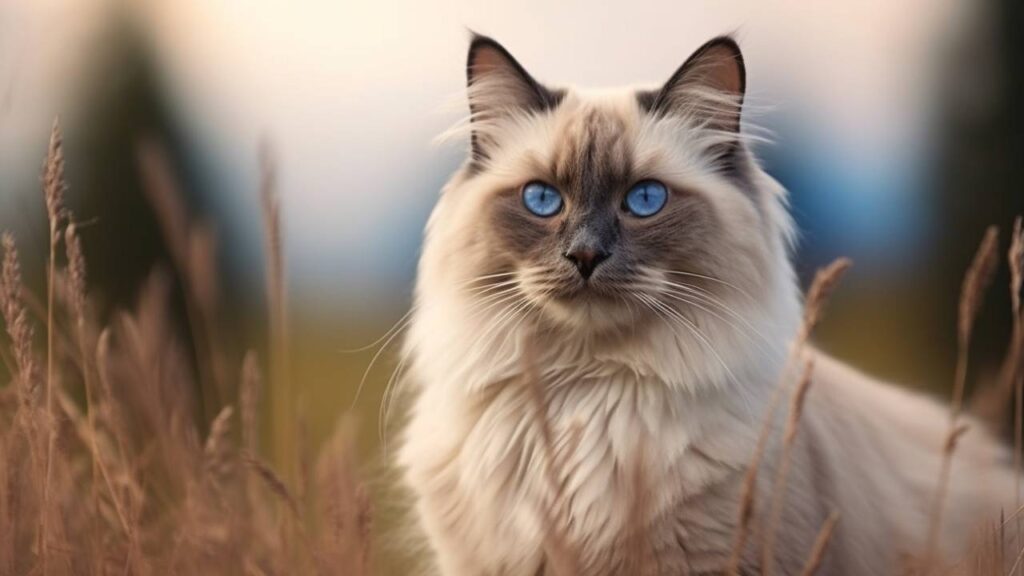
Birman
Birmans, also known as the “Sacred Cat of Burma,” are renowned for their striking blue eyes, white bodies, and contrasting dark points. Their history is shrouded in legend, adding a mystical allure to their already captivating presence. With their striking blue eyes, white bodies, and dark points, the Birmans are as mysterious as they are beautiful. Their medium-length, silky coats do not mat easily, making them a lower-maintenance option among the fluffy breeds.
- Preferences: Companionship and gentle play.
- Size: Medium; Height: 8-10 inches; Weight: 6-12 pounds.
- Food preference: Balanced diet with both wet and dry food.
- Lifespan: 12-16 years.
- Breed ancestors: Believed to have originated from Burma.
- Related cat breeds: Siamese, Ragdoll.
Good to know: Birmans are known for their friendly and gentle nature, making them great pets for families with children and other pets.
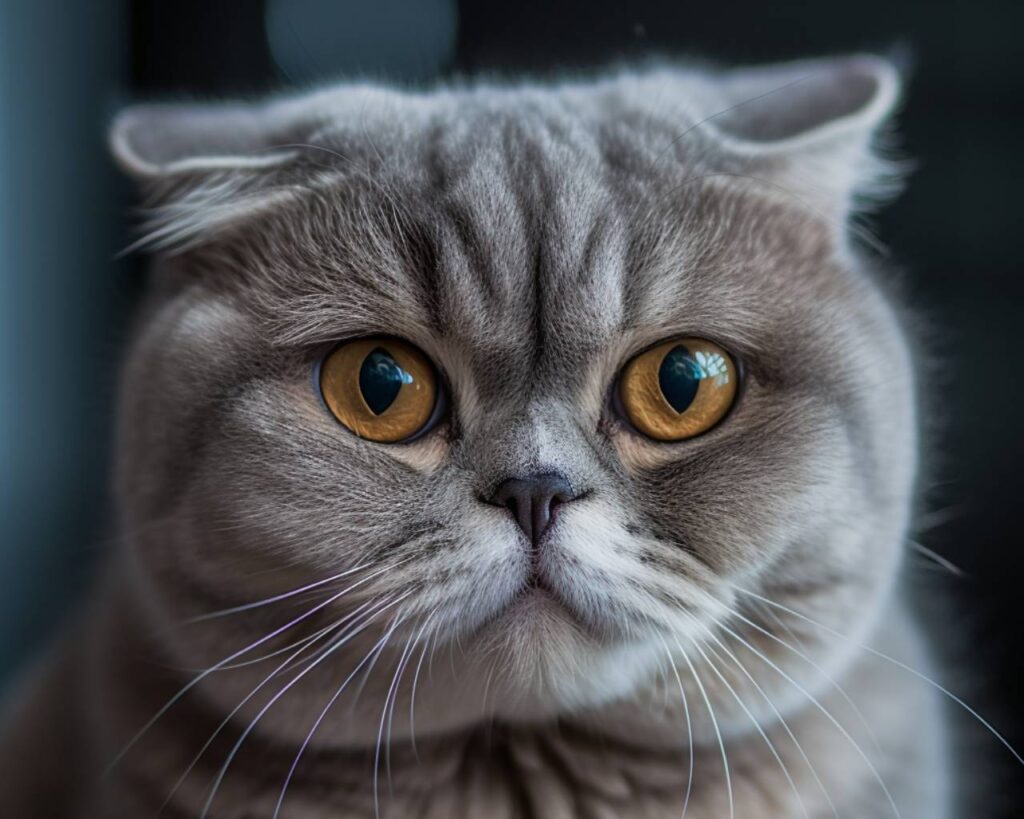
Scottish Fold
Scottish Folds are instantly recognizable by their unique folded ears, which give them an owl-like appearance. Combined with their medium-length fluffy coat, they are as charming to look at as they cuddle. These cats are known for their sweet, calm, and companionable nature, making them ideal pets for families and singles alike.
- Preferences: Enjoys interactive play and being close to their human companions.
- Size: Medium; Height: 8-10 inches; Weight: 6-13 pounds.
- Food preference: A well-balanced diet is suited to their age, size, and activity level.
- Lifespan: 12-15 years.
- Breed ancestors: Originated from a natural genetic mutation in Scotland.
- Related cat breeds: British Shorthair (due to crossbreeding to enhance the gene pool).
Tips: While their folded ears are adorable, checking and cleaning them regularly is essential to prevent any build-up or infections.

Somali
The Somali cat, often described as a long-haired Abyssinian, boasts a bushy tail, large ears, and a striking, fluffy coat that gives it a fox-like appearance. This breed is known for its playful energy and intelligence, making it a delightful and engaging companion. Somali cats are very social and do not like being alone for long periods. Providing plenty of toys and engagement can help keep them happy.
- Preferences: Highly active and enjoys interactive games.
- Size: Medium; Height: 9-11 inches; Weight: 6-10 pounds.
- Food preference: High-protein diet to match their energy levels.
- Lifespan: 11-16 years.
- Breed ancestors: Essentially a long-haired variant of the Abyssinian.
- Related cat breeds: Abyssinian.

Turkish Angora
The Turkish Angora is one of the oldest natural breeds, known for its silky, medium to long-length coat, elegant body, and playful yet affectionate demeanor. Originating from Turkey, these cats are beautiful but intelligent and agile, often described as having a dog-like loyalty to their owners.
- Preferences: Loves to be the center of attention and enjoys swimming.
- Size: Small to medium; Height: 9-10 inches; Weight: 5-9 pounds.
- Food preference: A quality diet that supports their active lifestyle.
- Lifespan: 15-18 years.
- Breed ancestors: Originated in the Ankara region of Turkey.
- Related cat breeds: Turkish Van.
Good to know: Despite their love for water, it’s essential to introduce bathing slowly to ensure a positive experience. Their long coat, while single-layered, makes grooming easier than expected for a fluffy breed.
With their diverse characteristics and enchanting coats, fluffy cat breeds offer something for every cat lover. As you consider bringing one of these fluffy companions into your home, remember that their care goes beyond their luxurious coats. They seek love, companionship, and engagement, making them not just pets but cherished family members.
Explore our collection of kittens for sale, each raised with love and ready to become a cherished part of your family. With dedicated support, we make connecting with your new companion effortless and joyful.
Fluffy Cat Breed Care Insights
Owning a fluffy cat breed is a delightful experience, filled with soft cuddles and majestic beauty. However, commitment is required, especially in grooming and health maintenance. Here are additional tips for potential fluffy cat owners:
- Slicker Brush: Ideal for gently removing mats and tangles, promoting a healthy, shiny coat.
- Metal Comb: This comb helps to fine-tune the grooming process, reaching down to the undercoat to remove loose fur and prevent matting.
- Mat Splitter: An essential tool for safely cutting through rugged mats without harming your cat’s skin.
- Dematting Tool: Similar to mat splitters, these tools can help tackle severe mats and tangles in long-haired breeds.
- Grooming Gloves: These can be a less invasive way to remove loose fur while providing a comforting massage that many cats enjoy.
- Consistent Grooming Schedule: Establish a regular grooming routine to prevent mats and tangles, and familiarize your cat with handling and brushing.
- Bathing: While not all cats require frequent baths, some fluffy breeds can benefit from occasional bathing with a cat-specific shampoo to keep their coats clean and reduce allergens.
Following these additional care tips ensures your fluffy cat remains healthy, happy, and enchanting. Remember, each cat is unique, so adapting care practices to suit your cat’s needs and preferences is essential.

FAQs
How often should I groom my fluffy cat?
Brush 2-3 times per week to prevent mats from distributing natural oils, and groom daily for denser or longer fur during shedding seasons.
Can fluffy cats live in warm climates?
Yes, they can adapt with proper care. Provide cool, shaded indoor areas and fresh water. Use pet-safe fans or air conditioning during hot weather.
What are the dietary needs for fluffy cats to maintain their coat?
A balanced diet rich in high-quality proteins and essential fatty acids is crucial. To improve coat condition, include foods high in omega-3 and omega-6 fatty acids. Consult your vet for specific dietary advice.
How do I bathe my fluffy cat without stress?
Introduce bathing gradually using warm water and cat-specific shampoo. Brush before bathing to detangle, keep water from their face, and soothe them with gentle talking. Dry with a towel and use a low-heat blow dryer if tolerated. Reward with treats and cuddles.
Do fluffy cats shed more than other breeds?
Yes, they shed more, particularly during seasonal changes. Regular grooming, a good vacuum for pet hair, and lint rollers help manage shedding.
References:
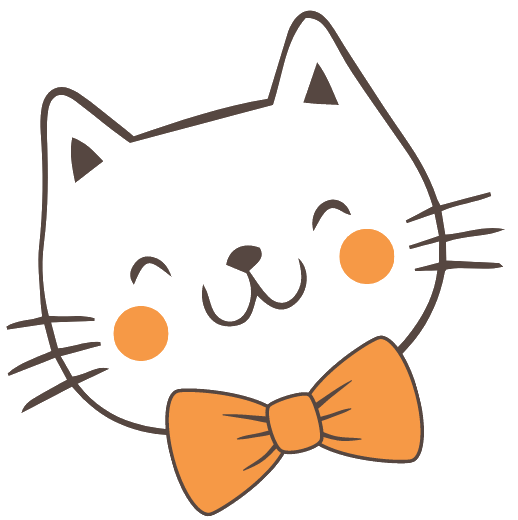

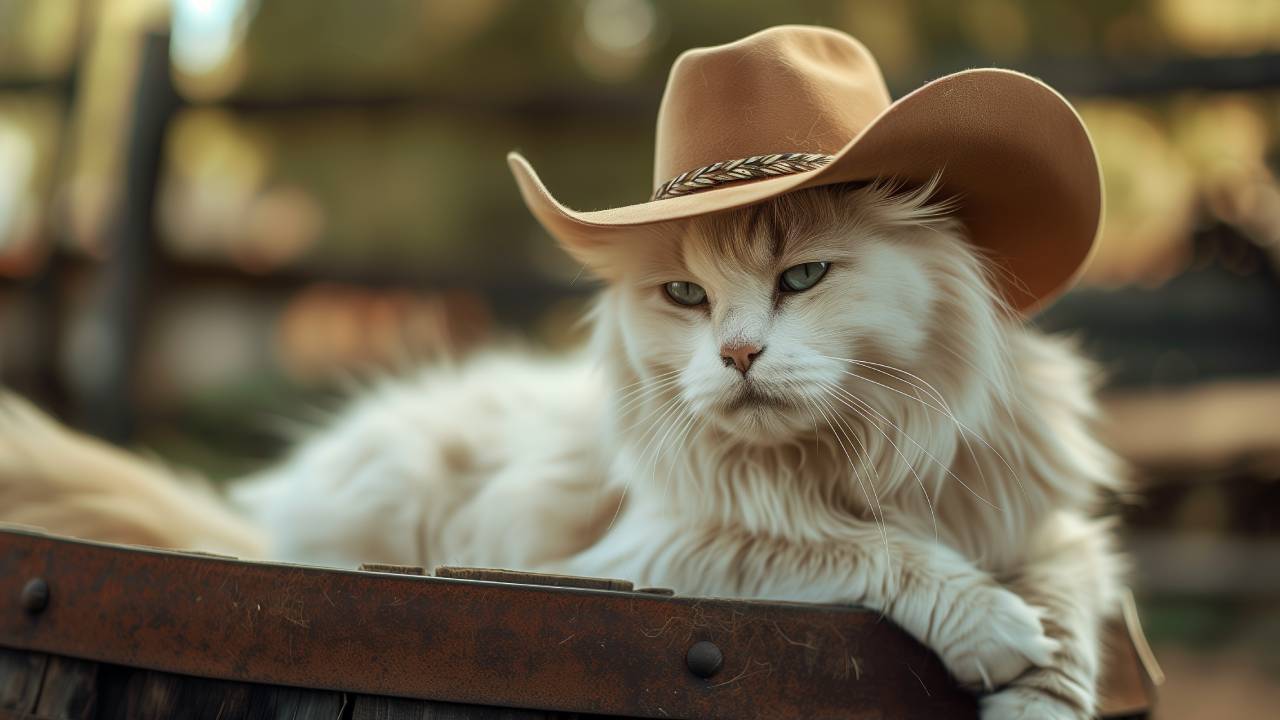
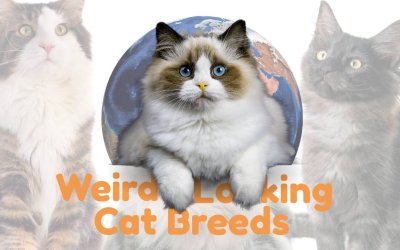

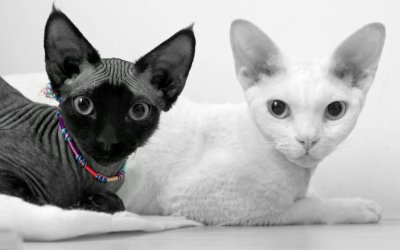
I’m on the lookout for a fluffy cat breed! Any recommendations on the best ones for cuddling?